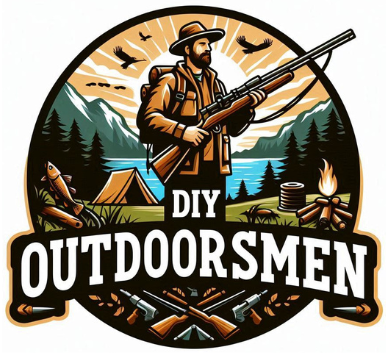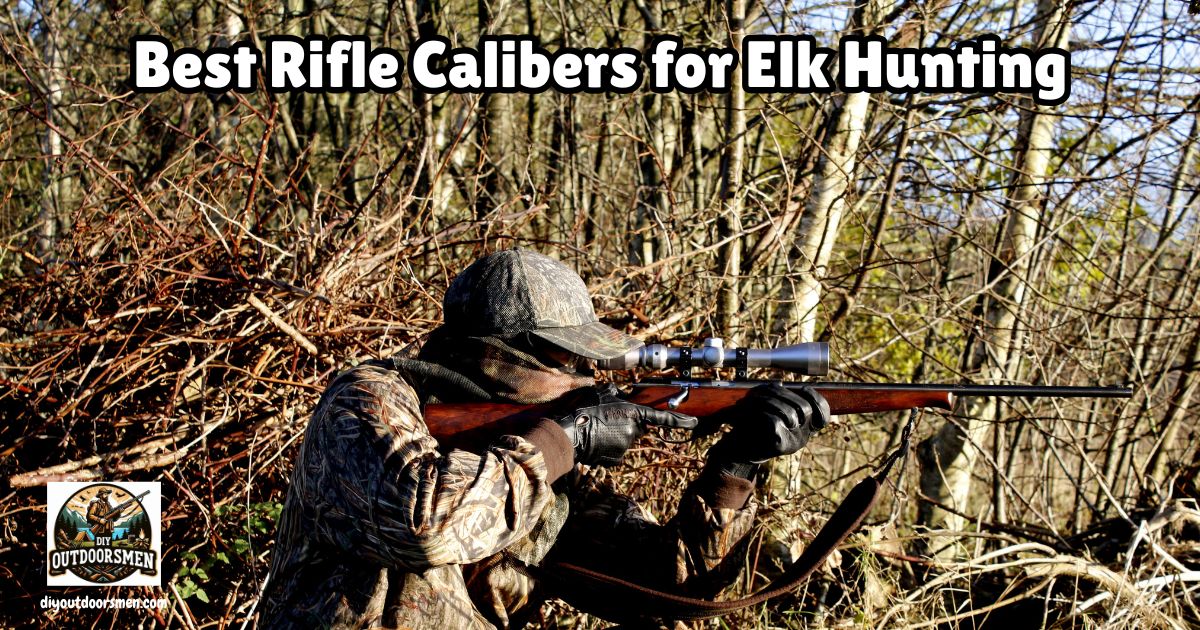Contents
- 1 Popular and Versatile Rifle Calibers for Elk Hunting
- 2 Rifle Caliber Options for Long-Range Elk Hunting
- 3 Budget-Friendly and Beginner-Friendly Rifle Calibers
- 4 Specialized Rifle Calibers for Unique Hunting Situations
- 5 Factors That Matter When Picking a Rifle Caliber
- 6 Real-World Examples and Practical Scenarios
- 7 Frequently Asked Questions
- 8 Final Thoughts
Picking the best rifle calibers for elk hunting is a question I get asked a lot by new hunters and even by experienced folks looking to switch things up. Elk are tough, large animals, so the right caliber can make a big difference.
QUICK LOOK: Factors for Choosing a Rifle Caliber for Elk Hunting
- Recoil Comfort: The most powerful cartridge isn’t worth much if you can’t shoot it well. I’ve seen too many hunters flinch and miss because of heavy recoil. Always choose something you can control and shoot confidently.
- Typical Hunting Terrain: Open desert or high mountain valleys let you take advantage of flat shooting magnums, while dense forests or brush favor short-range cartridges.
- Expected Shots: Realistically match your caliber to the shots you expect to take. Elk aren’t always at 500 yards, and it takes a lot of practice to hit something that far away in real hunting conditions.
- Ammunition Availability: Hunting trips sometimes hinge on finding ammo late in the season or at small-town shops. Sticking with a common caliber means you can always find ammo in a pinch.
- Bullet Construction: The style and quality of the bullet matter a lot for elk. Always look for bullets labeled for big game or elk specifically. I prefer bonded bullets or copper solids that hold together and penetrate deep.
I’ve spent years chasing elk across the West, and I’ve tried several of the most popular cartridges. With so many choices out there, deciding on one comes down to balancing your own experience, what you’re comfortable shooting, how far you expect to shoot, and even what ammunition you have access to.
Popular and Versatile Rifle Calibers for Elk Hunting
Some rifle calibers have earned a reputation as dependable elk performers. These options show up in hunting camps everywhere for good reason. They balance power, trajectory, and manageable recoil.
- .300 Winchester Magnum: Known as a do-anything, go-anywhere elk caliber, the .300 Win Mag delivers a ton of energy and a flat trajectory. It really shines if you’re after shots out to 400 yards or more, and is my pick when I’m hunting in open country. The trade-off is more recoil, which can be tiring during a long hunt or lead to flinches for some shooters.
- .30-06 Springfield: This classic round has taken more elk than probably any other, and I still trust it as a solid performer to about 300 yards. Its recoil is easier on the shoulder than the magnums, and you can always find ammo for it at most stores.
- 7mm Remington Magnum: This round sits nicely between the .30-06 and .300 Win Mag. It has a high velocity and carries enough punch for big bull elk. It also gives a little less recoil than the .300 Win Mag, which is a bonus for repeated practice and long hunts.
Rifle Caliber Options for Long-Range Elk Hunting
If you know you’ll be hunting big, open spaces where shots can stretch out, newer cartridges designed for long-range precision might fit you better. I’ve found these work great when accuracy past 400 or even 500 yards is a priority, but it’s really important to only take shots you feel steady about.
- 7mm PRC (Precision Rifle Cartridge): This newer round is built for flat trajectories and consistency at long range. The bullets are heavy for their caliber and cut through the wind well. On my last trip to Montana, this was my go-to for wide valleys and ridges, but I did have to look a little harder to find ammo locally.
- 6.5 PRC: This cartridge is a step up from the common 6.5 Creedmoor in terms of speed and energy. It’s very accurate, has mild recoil, and works out to about 400 yards on elk with the right bullets. It’s a solid choice for anyone who likes modern rifles and wants something in the middle range for power and comfort.
Budget-Friendly and Beginner-Friendly Rifle Calibers
Starting shouldn’t mean spending a fortune or getting bruised by punishing recoil. Here are a couple of options I’d recommend for anyone getting into elk hunting or for hunters who want access to affordable, easy-to-find ammo.
- .308 Winchester: This round is widely available and has mild recoil. Ballistics are similar to the .30-06 out to medium ranges. Many newer hunters like this caliber for its comfort and versatility across different big game.
- .270 Winchester: Made famous by Jack O’Connor, the .270 shoots flat and hits hard with the right bullet. With today’s premium ammunition, it stands up to elk surprisingly well. I’ve used my .270 on cows and raghorn bulls around 250 yards without a hitch.
Specialized Rifle Calibers for Unique Hunting Situations
Not every elk hunt happens on a high ridge or long meadow. Sometimes thick timber or short-range encounters call for something a bit different. Here are options that fit more specialized needs, or that seasoned hunters may already have in their safes.
- .45-70 Government: If your hunt will be up close in brushy forests, this bigbore cartridge is hard to beat. It hits like a sledgehammer inside of 150 yards. I took a bull in Idaho timber with a .45-70, and it never moved past where it stood.
- .280 Ackley Improved: This is a bit of a cult favorite for handloaders and accuracy fans. It gives high velocity and energy with manageable recoil and works nicely with heavier bullets. If you value versatility and have good ammunition sources, it’s worth looking at.
Factors That Matter When Picking a Rifle Caliber
Your best caliber will depend on what you need and what you can handle. Here are some points I always consider before heading out:
- Recoil Comfort: The most powerful cartridge isn’t worth much if you can’t shoot it well. I’ve seen too many hunters flinch and miss because of heavy recoil. Always choose something you can control and shoot confidently.
- Typical Hunting Terrain: Open desert or high mountain valleys let you take advantage of flat shooting magnums, while dense forests or brush favor short-range cartridges.
- Expected Shots: Realistically match your caliber to the shots you expect to take. Elk aren’t always at 500 yards, and it takes a lot of practice to hit something that far away in real hunting conditions.
- Ammunition Availability: Hunting trips sometimes hinge on finding ammo late in the season or at small-town shops. Sticking with a common caliber means you can always find ammo in a pinch.
- Bullet Construction: The style and quality of the bullet matter a lot for elk. Always look for bullets labeled for big game or elk specifically. I prefer bonded bullets or copper solids that hold together and penetrate deep.
Recoil and Accuracy
No matter how powerful a rifle caliber is, if I can’t deliver an accurate shot, I’m not helping the animal or myself. Practicing with your rifle and understanding how recoil affects you makes a huge difference.
In my experience, spending more time at the range helps me avoid bad habits like flinching, especially with bigger cartridges. For hunters new to the game, starting with a lighter recoiling caliber often means you’ll actually go out and practice more. That pays off when the moment of truth arrives in the field.
Terrain and Shot Distance
I adjust my rifle choice depending on where I’ll be. In Colorado’s high country, with the chance for long shots, I want a flat shooter like a 7mm Rem Mag or .300 Win Mag. In Oregon’s thick forests, my .30-06 or even a .308 is perfect.
Anticipating the type of terrain you’ll hunt in helps narrow your caliber choices quickly. If you hunt several states or regions, sometimes owning more than one rifle helps ensure you’re always matched to the hunt’s demands. Many elk hunters end up collecting several rifles over the years for exactly this reason.
Ammunition and Bullet Type
Not all ammunition is created equal, and premium big game bullets really make a difference in elk hunting. I focus on bonded or controlled expansion bullets. These stay together when they hit bone and muscle.
Soft points can work, but heavier bullets (160-grain or above) are usually my go-to for larger elk. When in doubt, always ask your local gun shop about which bullet types work best on elk in your area. These recommendations can be a great way to try proven loads.
Real-World Examples and Practical Scenarios
I’ve seen plenty of big bulls drop cleanly to a well-placed shot with a .308 or .270 using the right bullet. At the same time, the newer magnums have made a mark in situations where a little extra reach is needed.
For those who reload their own ammunition, custom loads can help squeeze even more performance from your chosen caliber. Still, factory loads available at most stores work well for the vast majority of hunters. If you’re hunting in remote spots, consider packing enough spare ammo for your whole trip, especially if you’re using a less common caliber.
- Public Land, Mixed Terrain: I like a .30-06 or 7mm Mag here, since you never know if you’ll be in the trees one minute or glassing open hills the next.
- Private Ranch, Long Shots: If tags are hard to come by and you’re set up for long shots, the magnums like .300 Win Mag or 7mm PRC get the nod.
- Youth or Recoil Sensitive Hunter: A .308 or .270 using a quality bullet is more than enough for most elk and will encourage new hunters to develop good habits.
Frequently Asked Questions
Here are some questions I often hear when talking about calibers for elk:
What is the minimum caliber for elk hunting?
Most states set a minimum of .270 or .30 caliber for elk hunting. I always recommend following the local rules and making sure your rifle can deliver at least 1500 foot pounds of energy at the distance you expect to shoot.
Does bullet weight matter as much as caliber?
Yes, bullet weight and construction matter a lot. For elk, heavy for caliber bullets (usually 160 grains and above) tend to penetrate better and offer more reliable kills, especially on big-bodied bulls.
Can I hunt elk with my deer rifle?
Many deer rifles are also great for elk, especially if chambered in .270, .308, .30-06, or 7mm. Just switch to a heavier bullet that’s designed for elk, and make sure you’re comfortable with your rifle at hunting ranges.
Final Thoughts
There’s no one “perfect” elk caliber that suits everyone, but there are plenty of good choices. The best rifle caliber for elk hunting is one you feel comfortable shooting, that matches your hunting style and terrain, and uses a bullet designed for penetrating big animals.
Practice with your rifle, pick quality ammunition, and focus on reliable shot placement. The rest is up to you and your time in the field. If you want to get the most from your adventure, talk with fellow hunters and check out recent hunting forums—there’s always something new to learn.
Most Recent Articles:
- 14 Tips And Tactics For Public Land Mule Deer Hunting
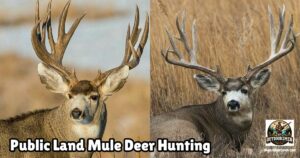
- 6 Features of Waterproof Ground Blinds For Wet-condition Elk Hunting
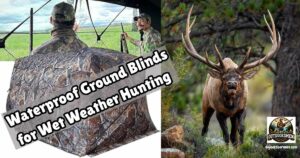
- 4 of the Best DIY Elk Hunting Areas In Colorado
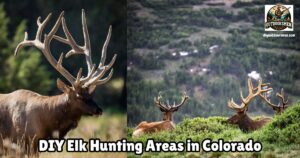
- 8 Tips for Choosing the Best DIY Elk Hunting States
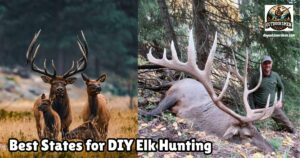
- 5 Hunting Gear Packing List Essentials For DIY Trips

- 7 Tips For Hunting The Elk Migration
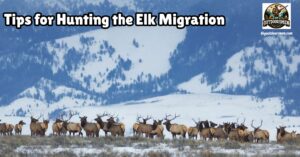
As always, stay safe, enjoy the journey, and please try to leave it cleaner than you found it. If you have any comments, questions, ideas, or suggestions, please leave them in the comment section below, and I’ll get back to you ASAP. You can follow us on YouTube: Man Art Creations for videos of our DIY Adventures.
P.S. Thanks so much for checking out our blog; we really appreciate it. Just so you know, we may receive a commission if you click on some of the links that appear on our site. This helps us keep our content free and up-to-date for everyone. We appreciate your support!
